GrahamC
|
| posted on 25/9/24 at 08:13 AM |

|
|
Simplified Fuel System - Guidance Please
Looking for some fuel system design advice for my next injected engine build...
On previous builds I've used the basic sequence of:
Tank...Coarse Filter...Low Pressure Pump...Swirl Pot...High Pressure Pump...Fine Filter...Regulator...Fuel Line
(with a return line from the regulator bleeding any excess back to the tank)
Typically, I've done this based on existing constraints of converting a previously built carb-based car and moving it onto a fuel injected engine
- hence the convoluted setup.
On my next build I'd like to massively simplify this - but I'm really confused over how to do the pump/regulator arrangement 
The engine I have in mind is currently using a dead-end fuel rail (with a resonance damper on the end of the rail) and so I'd like to stick with
a return-less system. I was going to measure up for a custom tank, get one made which has baffles and a sump built in and then sink into it a
high-pressure pump.
Can someone suggest an appropriate OEM pump that I could source to sink into the tank which has a regulator built in to deliver a constant 3 bar to
the rail?
Or if I'm fundamentally misunderstanding how to do this I'd be grateful of a dummies overview for an alternative arrangement.
|
|
|
|
|
voucht
|
| posted on 27/9/24 at 06:04 PM |

|
|
Hi,
Have a look at my post on this thread:
https://www.locostbuilders.co.uk/viewthread.php?tid=220731
There are different set-ups for a fuel injection system I draw for a catalogue when I was working for a company specialized in hose and fittings
system for motor sports.
I think the simplest are set-up where everything is in-tank : surge tank, fuel pump, fuel regulator. No need for a low pressure pump to feed the
surge tank.
But of course, not the most practical or convenient: you will need to open the tank if something goes wrong with one of the elements.
And my golden rule is: one filter before the fuel pump to protect the pump, and one filter between the pump and the engine to protect the engine if
something breaks into the fuel pump.
Regarding the pump, pressure is one thing, but you need to know the requested flow. Depends on the engine.
Sytec, Walbro or Pierburg in-tank pumps are reliable. There is a great company in the UK I used to purchase from when I was working in the industry,
it's: FSE Glencoe.
They will supply all that you need.
Hope that will help 
[Edited on 27/9/24 by voucht]
[Edited on 27/9/24 by voucht]
https://vouchtroadster.blogspot.com/
https://caferacer-kawa-gpz-zx550.blogspot.com/
|
|
|
cliftyhanger
|
| posted on 28/9/24 at 07:11 AM |

|
|
I have used a Golf intank pump. It has a built in swirl pot and is removable. It just happened to be the right height.
The tank will run down tio almost empty and no issues.
The only downside from your point of view is it has a return, with the FPR on the fuel rail. I think you can (anybody able to veryfy?) fit the FPR at
the pump, so the single fuel line sits at 3bar or whatever. My concern that teh pressure would not be as well regulated at the injectors, but in
theory it should make no difference.
|
|
|
voucht
|
| posted on 28/9/24 at 12:14 PM |

|
|
Fuel pressure can be regulated either on the feed or return lines, it makes no difference in the pressure regulation. The only difference is that if
the FPR is on the feed line, the fuel rail should be plugged at the end and return is done from the 3rd port of the FPR. If the FPR is on the return
line, you just need a 2-port FPR.
On my Haynes Roadster (Ford 2,0i DOHC) I had the fuel regulator on the return line. 2 ports only. On the picture, the fuel line returning to the tank
is underneath the FPR and you can't see it.
 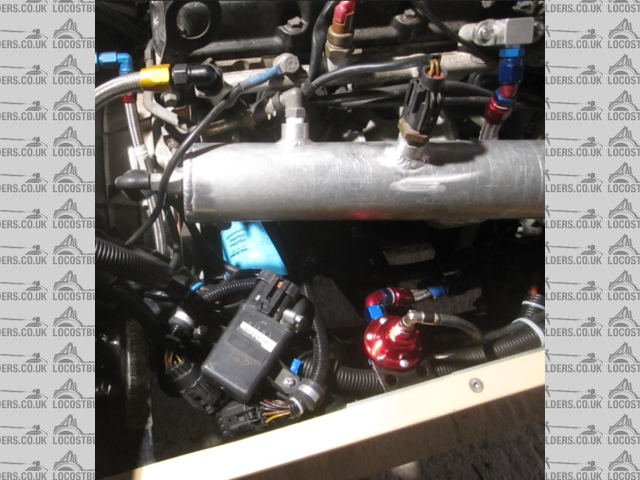
Description
It is more or less this set-up:
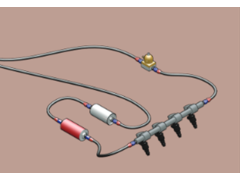 
Description
On the race cars of the company I’m working for (Mitjet), we recently installed an adjustable FPR to
replace the non reliable enough and non adjustable OEM FPR in the OEM in-tank fuel pump assembly. 3 ports FPR. On the drawing, the return line is
ES232, and feed lines are on each side of the FPR (ES225), going to the fuel rail.
 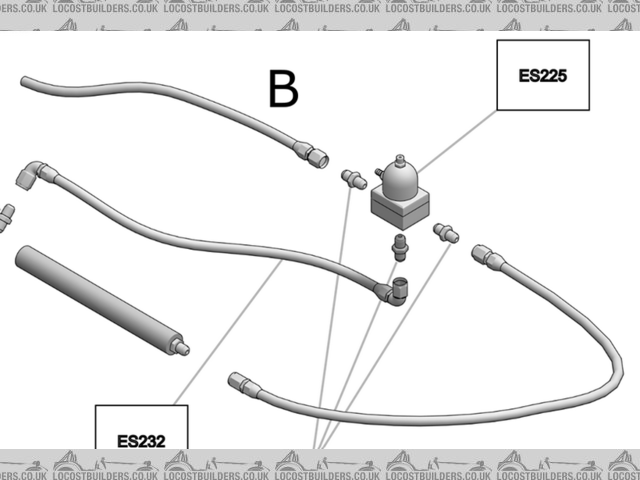
Description
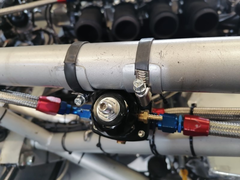 
Description
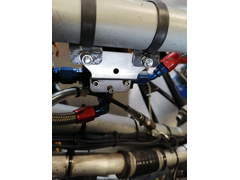 
Description
If the engine GrahamC wants to use has a « dead-end fuel rail », it means that somewhere on the original car, there is a FPR on the feed line. So
return should come from the FPR, because it cannot come from the fuel rail. He can put the FPR close to the engine (longer return line), or close to
the tank (shorter return line), it will make no difference.
On most of OEM in-tank fuel pump assemblies, the fuel pump and the FRP are in the assembly, in the fuel tank.
https://vouchtroadster.blogspot.com/
https://caferacer-kawa-gpz-zx550.blogspot.com/
|
|
|
GrahamC
|
| posted on 28/9/24 at 04:05 PM |

|
|
Appreciate the responses and as a result have done more reseach and improved my understanding. 
An OEM in-tank fuel pump assembly is definitely on my radar now, seems a neat and not too costly solution.
Also been looking at oem fuel filters that have built-in pressure regulators as they seem to be a very neat solution and not too costly - didn't
even know they existed!
|
|
|













